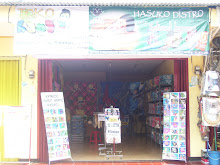By: Cronan McNamara
THE CURRENT STATE OF AFFAIRS
Childhood obesity has widely spread in industrialized countries. In the USA, over 15% of children are currently considered obese and the number is likely to grow in the future. In Ireland alone, about 300,000 children are overweight or obese. Obesity indirectly leads to about 2,000 deaths a year and also to indirect costs of about 4 bn EUR a year.
Obesity can be caused by hereditary factors, meaning that children are often predisposed to be obese, if their parents are obese, too. Whether this is just due to eating habits which are copied by children or due to genetic changes is still subject to research.
In addition to this, children are less likely to engage in physical outdoors activities due to recent advances in technology. Computers, television and electronic games keep them at home instead of encouraging them to play outside. The use of mobile phones from an early age inclines them to contact their friends with their phones instead of walking to their friends’ houses to see them. Thus their physical inactivity keeps them from burning fat, which then accumulates in the body.
Furthermore the parental tradition of home-cooking is disappearing due to lack of time. In that way many children are exposed to too much fast food, which again leads to weight gain.
CREME CAN HELP TARGET THE PROBLEM OF OBESITY
The current state of affairs is hazardous, because it endangers our children’s lives. Obesity can not only lead to psychosocial problems, but also to serious illnesses, such as diabetes, sleeping disorders, high blood pressure, osteoarthritis, angina or heart diseases.
CREMe can help fight child obesity by helping researchers analyse food consumption data in order to allow them to target resources in the areas that will have the greatest impact on children’s health.
The "sort by demographics" option in CREMe allows researchers to sort the data they collect by area, age group or eating habits. We also have data on BMIs, which allows researchers to compare BMI data of whole populations or to look at the obese parts of the population only.
The software also permits researchers to analyse the data they have for chemical toxins in food and thus test to see if obese children are further compounding their health problems by being exposed to more chemical toxins than the regular population.
CREMe has access to a brand new children’s food consumption database which will facilitate researchers’ work.
About CREMe Software Ltd.:
CREMe Software Ltd. promotes health and wellness by helping regulators, safety authorities, food, personal care product and chemical manufacturers to easily and accurately evaluate exposure levels of consumers to chemicals. CREMe 2.0 Food is its online tool for food safety assessments. CREMe 2.0 is an online system which allows collaboration and data sharing between organisations. CREMe 2.0 uses high performance computing technology that is used by major financial institutions to assess exposure and risk in order to accurately and efficiently calculate exposure of populations to chemicals in their foods. This technology is provided through an easy-to-use web interface. All hazard and consumption information is easily inputted or uploaded to the system. Once you have your information uploaded to CREMe, the meaning of the data becomes crystal clear on the system. CREMe will take care of the complexity to calculate the exposure levels of the population to hazards. CREMe provides output data at every level of the calculation including each level of decision made by the software based on the users’ input probabilities. These need to be made available to the users for scrutiny in order to eliminate black box scenario in the models.
About The Author:
Cronan McNamara, is CEO and Founder of CREMe Software Ltd. CREMe's mission is to improve health and wellness by helping industry, government and researchers to easily and accurately evaluate population exposure levels to nutrients, additives, packaging migrants, pesticides and chemicals.
Cronan has a BSc in Physics from UCD and an MSc in Computing from TCD.
After working in financial risk analysis with Merrill Lynch Capital Markets Bank in Dublin, Cronan returned to Trinity College to manage the model and software development for the EU framework 7 Monte Carlo project and following on from that the EU Framework 6 NOFORISK Project and the Enterprise Ireland funded CREME Project.
In April 2005 Cronan formed CREMe Software Ltd. to bring the benefits of the software tools and expertise developed in the above research programmes to a wider audience.
www.cremesoftware.com
info@cremesoftware.com
+353 1 896 3847
November 19, 2007
How Fight Childhood Obesity
Posted by Butik 2sHa on 11:34:00 AM Tags Nutrition

